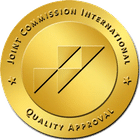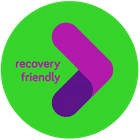On October 12, 2022, the FDA announced an Adderall shortage in the United States. Companies that produced amphetamine mixed salts were experiencing manufacturing delays or not producing enough to meet demand, the FDA said. However, the complete explanation is more complicated.
At GateHouse Treatment, we’ve written previously about the rise of Adderall abuse in the United States. Students misuse it during college, professionals misuse it in the workforce, and it has increased in popularity as a party drug. Doctor shopping for a prescription has given way to buying unregulated street versions, often mixed with more dangerous drugs. As part of our mission to ensure holistic health and help individuals beat their addiction, we care about drug production and shortages developments.
If you or someone you love overuses Adderall as a crutch, there’s never been a better time to quit. This article will cover the relevant facts surrounding Adderall addiction and the ongoing shortage.
1. History of Adderall
Adderall is a prescription medication that combines amphetamine and dextroamphetamine, both central nervous system stimulants. The inclusion of amphetamine is why Adderall is sometimes derisively called Speed or Meth Light after its more potent cousins. The drug, first approved by the United States Food and Drug Administration (FDA) in 1996, has since become widely prescribed for treating attention deficit hyperactivity disorder (ADHD) and narcolepsy.
Soldiers became regular amphetamine users during World War II to combat fatigue and increase alertness. Its stimulating effects enhanced focus and concentration, leading to its use in combat. After the war, amphetamine abuse became a concern. The drug gained popularity as a recreational substance, leading to tighter regulation and control. In response, the Controlled Substances Act of 1970 classified amphetamine as a Schedule II controlled substance, indicating its high potential for abuse and dependence.
Adderall, as we know it today, was developed as an improvement over existing amphetamine formulations. It combines different forms of amphetamine, including dextroamphetamine, which slowly crosses into the brain. This effect allows for a more balanced and sustained release of the medication.
In the 2010s, Adderall misuse began to skyrocket, increasing by 67% from 2006 to 2011 alone. The rise in ADHD diagnoses and its popularity as a study drug is behind this startling increase.
2. What Adderall Does
While Adderall can be highly effective for individuals with ADHD, it is essential to be aware of its potential risks and side effects. Common side effects include increased heart rate, elevated blood pressure, decreased appetite, and difficulty sleeping. These side effects are generally mild and manageable with proper dosage adjustments and monitoring.
However, Adderall can also have more severe adverse effects, particularly when misused or abused. Misuse refers to taking the medication without a prescription or in higher doses than prescribed. Conversely, abuse involves using it for non-medical purposes, such as to enhance performance or induce euphoria. Both misuse and abuse can lead to addiction, dependence, and a range of physical and psychological health problems, including death.
The severe symptoms of Adderall addiction include:
- High blood pressure
- Constipation
- Breakdown in muscle fibers
- Kidney failure
- Extreme paranoid or aggressive mood swings
- Impotence or severely diminished sex drive
- Recurring headaches
- Psychosis
- Heart attack and other cardiac complications, such as irregular heart rhythm
- Overdose
Adderall is a habit-forming substance, meaning once the brain craves it once the body becomes accustomed, and it is difficult to quit. Repeated use also increases tolerance, requiring higher doses to feel a similar, albeit weaker, effect.
3. The Adderall Shortage
Drug shortages are rarely a problem of too much demand but too little supply. Due to its high risk for misuse, the Drug Enforcement Agency (DEA) regulates Adderall production. The reasoning is that an illegal street economy would form if excess pills were available. The DEA sets limits as annual production ceilings on Adderall by capping the amount of raw material that companies can buy to produce it. The DEA has kept Adderall production artificially low by treating it the same as prescription opiates.
Throughout the decade and peaking during the Coronavirus pandemic, the number of people diagnosed with ADHD and prescribed Adderall rose by 10.4%. There is no doubt that part of this is more awareness about ADHD, and another part was the difficulty of sitting at home and focusing on work. The DEA was already lagging in adjusting sss numbers for increased demand and was slow to adapt to this uptick. Companies waited for the DEA to revise their Adderall quotas. Meanwhile, individuals could not refill their prescriptions.
Aside from bureaucracy, the Adderall crisis is difficult to summarize due to the lack of transparency in the drug manufacturing supply chain. The FDA announcement of the shortage offered few specifics. The only explanation came from drug companies, who are under no scrutiny to release details about their manufacturing processes. The Adderall supply chain involves pharmaceutical ingredients produced in India and China, and there is no transparency regarding the production capacity of these suppliers.
This lack of clarity meant that nobody except the DEA or pharmaceutical companies could be sure what a manufacturing shortage meant. Was the United States running out of an active ingredient? Did a factory close in India? Lack of transparency means no one can be sure about the exact magnitude of the problem or expect when the shortage could end. Six months after the FDA’s original announcement, the answers remain unclear.
When this happens, people who legitimately need the medication compete with addicts for a limited supply, and the price of a drug rises as a black market forms. Serendipitously, this gives addicts a chance to reconsider and quit Adderall. There is no better time than now to free yourself from dependence.
GateHouse Treatment and Adderall Addiction
If you need a calm environment to recover fully, aided by experts who truly care about improving you and not simply addressing your symptoms, GateHouse Treatment is the place for you. No matter the addiction or its severity, we have an individualized treatment plan to help you achieve sobriety. We offer outpatient, intensive outpatient, and partial hospitalization programs to give you the flexibility you need.
Adderall addicts sometimes focus with focus and purpose. In addition to our traditional therapies, we offer adventure and biofeedback therapy, which allow you to learn new skills and control your body’s processes to ensure concentration. Call (855) 448-3588 or reach out on our website for a free consultation to learn how we can help.
- Cymbalta Withdrawal: Causes, Symptoms, And Management - October 12, 2023
- Boredom in Recovery: 5 Tips to Avoid Relapse - October 6, 2023
- Overconfidence and Rehab: Avoiding Relapse - October 4, 2023




